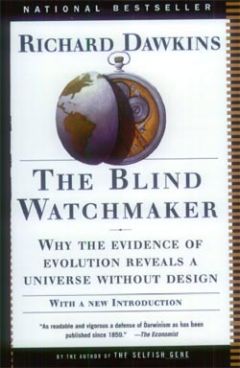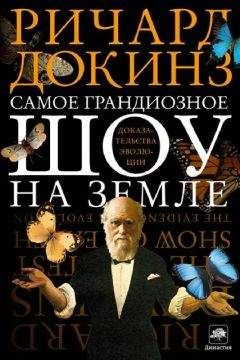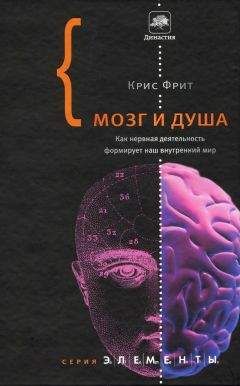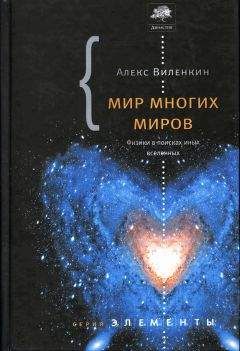Ричард Докинз - Слепой часовщик. Как эволюция доказывает отсутствие замысла во Вселенной
20. Dawkins, R. (1976) The Selfish Gene. Oxford: Oxford University Press.
21. Dawkins, R. (1982) The Extended Phenotype. Oxford: Oxford University Press.
22. Dawkins, R. (1982) Universal Darwinism. In D. S. Bendall (ed.) Evolution from Molecules to Men. Р. 403–425. Cambridge: Cambridge University Press.
23. Dawkins, R. & Krebs, J. R. (1979) Arms races between and within Species. Proceedings of the Royal Society of London, B, 205: 489–511.
24. Douglas, A. M. (1986) Tigers in Western Australia. New Scientist, 110 (1505): 44–47.
25. Dover, G. A. (1984) Improbable adaptations and Maynard Smith’s dilemma. Unpublished manuscript, and two public lectures. Oxford, 1984.
26. Dyson, F. (1985) Origins of Life. Cambridge: Cambridge University Press.
27. Eigen, M., Gardiner, W., Schuster, P. & Winkler-Oswatitsch. (1981) The origin of genetic information. Scientific American, 244 (4): 88–118.
28. Eisner, T. (1982) Spray aiming in bombardier beetles: jet deflection by the Coander Effect. Science, 215: 83–85.
29. Eldredge, N. (1985) Time Frames: the rethinking of Darwinian evolution and the theory of punctuated equilibria. New York: Simon&Schuster (в этом издании также приводится оригинальная статья Элдриджа и Гульда, где впервые была изложена теория прерывистого равновесия).
30. Eldredge, N. (1985) Unfinished Synthesis: biological hierarchies and modern evolutionary thought. New York: Oxford University Press.
31. Fisher, R. A. (1930) The Genetical Theory of Natural Selection. Oxford: Clarendon Press. 2nd edn paperback. New York: Dover Publications.
32. Gillespie, N. C. (1979) Charles Darwin and the Problem of Creation. Chicago: University of Chicago Press.
33. Goldschmidt, R. B. (1945) Mimetic polymorphism, a controversial chapter of Darwinism. Quarterly Review of Biology, 20: 147–164 and 205–230.
34. Gould, S. J. (1980) The Panda’s Thumb. New York: W. W. Norton.
35. Gould, S. J. (1980) Is a new and general theory of evolution emerging? Paleobiology, 6: 119–130.
36. Gould, S. I. (1982) The meaning of punctuated equilibrium, and its role in validating a hierarchical approach to macroevolution.
In R. Milkman (ed.) Perspectives on Evolution. Р. 83–104. Sunderland, Mass: Sinauer.
37. Gribbin, J. &. Cherfas, J. (1982) The Monkey Puzzle. London: Bodley Head.
38. Griffin, D. R. (1958) Listening in the Dark. New Haven: Yale University Press.
39. Hallam, A. (1973) A Revolution m the Earth Sciences. Oxford: Oxford University Press.
40. Hamilton, W. D. & Zuk, M. (1982) Heritable true fitness and bright birds: a role for parasites? Science, 218: 384–387.
41. Hitching, F. (1982) The Neck of the Giraffe, or Where Darwin Went Wrong. London: Pan.
42. Ho, M-W. & Saunders, P. (1984) Beyond Neo-Darwinism. London: Academic Press.
43. Hoyle, F. & Wickramasinghe, N. C. (1981) Evolution from Space. London: J. M. Dent.
44. Hull, D. L. (1973) Darwin and his Critics. Chicago: Chicago University Press.
45. Jacob, F. (1982) The Possible and the Actual. New York: Pantheon.
46. Jerison, H. J. (1985) Issues in brain evolution. In R. Dawkins & M. Ridley (eds) Oxford Surveys in Evolutionary Biology, 2:102–134.
47. Kimura, M. (1982) The Neutral Theory of Molecular Evolution. Cambridge: Cambridge University Press.
48. Kitchen P. (1983) Abusing Science: the case against creationism. Milton Keynes: Open University Press.
49. Land, M. F. (1980) Optics and vision in invertebrates. In H. Autrum (ed.) Handbook of Sensory Physiolog y. Р. 471–592. Berlin: Springer.
50. Lande, R. (1980) Sexual dimorphism, sexual selection, and adaptation in polygenic characters. Evolution, 34: 292–305.
51. Lande, R. (1981) Models of speciation by sexual selection of polygenic traits. Proceedings of the National Academy of Sciences, 78: 3721–3725.
52. Leigh, E. G. (1977) How does selection reconcile individual advantage with the good of the group? Proceedings of the National Academy of Sciences, 74: 4542–4546.
53. Lewontin, R. C. & Levins, R. (1976) The Problem of Lysenkoism. In H. &. S. Rose (eds) The Radicalization of Science. London: Macmillan.
54. Mackie, J. L. (1982) The Miracle of Theism. Oxford: Clarendon Press.
55. Margulis, L. (1981) Symbiosis in Cell Evolution. San Francisco: W. H. Freeman.
56. Maynard Smith, J. (1983) Current controversies in evolutionary biolog y. In M. Grene (ed.) Dimensions of Darwinism. Р. 273–286. Cambridge: Cambridge University Press.
57. Maynard Smith, J. (1986) The Problems of Biology. Oxford: Oxford University Press.
58. Maynard Smith, J. et al. (1985) Developmental constraints and evolution. Quarterly Review of Biology, 60: 265–287.
59. Mayr, E. (1963) Animal Species and Evolution. Cambridge, Mass: Harvard University Press.
60. Mayr, E. (1969) Principles of Systematic Zoology. New York: McGraw-Hill.
61. Mayr, E. (1982) The Growth of Biological Thought. Cambridge, Mass: Harvard University Press.
62. Monod, J. (1972) Chance and Necessity. London: Fontana.
63. Montefiore, H. (1985) The Probability of God. London: SCM Press.
64. Morrison, P., Morrison, P., Eames, C. & Eames, R. (1982) Powers of Ten. New York: Scientific American.
65. Nagel, T. (1974) What is it like to be a bat? Philosophical Review, reprinted in D. R. Hofstadter & D. C. Dennett (eds). The Mind’s I. Р. 391–403. Brighton: Harvester Press.
66. Nelkin, D. (1976) The science textbook controversies. Scientific American 234 (4): 33–39.
67. Nelson, G. & Platnick, N. I. (1984) Systematics and evolution, in M.-W. Ho & P. Saunders (eds) Beyond Neo-Darwinism. London: Academic Press.
68. O’Donald, P. (1983) Sexual selection by female choice.
In P. P. G. Bateson (ed.) Mate Choice. Р. 53–66. Cambridge: Cambridge University Press.
69. Orgel, L. E. (1973) The Origins of Life. New York: Wiley.
70. Orgel, L. E. (1979) Selection in vitro. Proceedings of the Royal Society of London, B, 205: 435–442.
71. Paley, W. (1828) Natural Theology, 2nd edn. Oxford: J. Vincent.
72. Penney, D., Foulds, L. R. & Hendy, M. D. (1982) Testing the theory of evolution by comparing phylogenetic trees constructed from five different protein sequences. Nature, 297: 197–200.
73. Ridley, M. (1982) Coadaptation and the inadequacy of natural selection. British Journal for the History of Science, 15: 45–68.
74. Ridley, M. (1986) The Problems of Evolution. Oxford: Oxford University Press.
75. Ridley, M. (1986) Evolution and Classification: the reformation of cladism. London: Longman.
76. Ruse, M. (1982) Darwinism Defended. London: Addison-Wesley.
77. Sales, G. & Pye, D. (1974) Ultrasonic Communication by Animals. London: Chapman & Hall.
78. Simpson, G. G. (1980) Splendid Isolation. New Haven: Yale University Press.
79. Singer, P. (1976) Animal Liberation. London: Cape.
80. Smith, J. L. B. (1956) Old Fourlegs: the story of the Coelacanth. London: Longmans, Green.
81. Sneath, P. H. A. & Sokal, R. R. (1973) Numerical Taxonomy. San Francisco: W. H. Freeman.
82. Spiegelman, S. (1967) An in vitro analysis of a replicating molecule. American Scientist, 55: 63–68.
83. Stebbins, G. L. (1982) Darwin to DNA, Molecules to Humanity. San Francisco: W. H. Freeman.
84. Thompson, S. P. (1910) Calculus Made Easy. London: Macmillan.
85. Trivers, R. L. (1985) Social Evolution. Menlo Park: Benjamin-Cummings.
86. Turner, J. R. G. (1983) ‘The hypothesis that explains mimetic resemblance explains evolution’: the gradualist-saltationist schism. In M. Grene (ed.) Dimensions of Darwinism. Р. 129–169. Cambridge: Cambridge University Press.
87. Van Valen, L. (1973) A new evolutionary law. Evolutionary Theory, 1: 1–30.
88. Watson, J. D. (1976) Molecular Biology of the Gene. Menlo Park: Benjamin-Cummings.
89. Williams, G. C. (1966) Adaptation and Natural Selection. New Jersey: Princeton University Press.
90. Wilson, E. O. (1971) The Insect Societies. Cambridge, Mass: Harvard University Press.
91. Wilson, E. O. (1984) Biophilia. Cambridge, Mass: Harvard University Press.
92. Young, J. Z. (1950) The Life of Vertebrates. Oxford: Clarendon Press.
Предметно-именной указатель и ключ к списку литературы
Эта книга предназначена для того, чтобы ее читали от корки до корки. Она не является ни справочником, ни научным трактатом, на который можно было бы ссылаться. Многие пункты настоящего указателя могут иметь какой-либо смысл только для тех, кто уже прочел книгу и хочет отыскать в ней некий конкретный отрывок. В книгах, подобных этой, сноски нежелательны — они лишь раздражают и рассеивают внимание. Данный указатель помимо своей обычной функции выполняет и функцию сносок, будучи еще и ключом к библиографии. Числа в скобках соответствуют номерам книг или статей в списке литературы. Остальные числа — это номера страниц данной книги. Если какое-либо понятие появляется на нескольких следующих друг за другом страницах, тогда, как правило, указывается только номер первой из этих страниц или номер той страницы, где дается определение искомого понятия.
австралийская фауна 170 (78)
австралопитеки 342, 346
адресация, в компьютерной памяти и в генах 187–188
Азимов, А. 87 (5)
альтруизм 313 (20, 52)
амеба 184, 373–374
амниоты 258 (92)
аналогия с библиотекой 380, 386
аналогия с галечным пляжем 85
аналогия с машинистками 195–196, 198
аналогия с росинками 200
аналогия с термостатом 318
аналогия с усилителем 376
аналогия Фишера с микроскопом 307, 350 (31)
Андерсон, Д. М. 241 (2)
Андерссон, М. 322–325 (3)
Аргайл, Дж., герцог 372 (73)
архивы ДНК 191–192
— точность сохраняемой в них информации 193–194
Аткинс, П. У. 25, 46–47 (8)
Багдад, пешком в 82
бактерии 184, 204, 267
Бейтсон, У. 451 (цитируется в 22) белый медведь 79–80 (63)
Беннетт, Г. 80 (цитируется в 63)
бестселлеры 332
биоморфы 101, 350–351, 460
биохимические пути обмена веществ 259
бобр (21) 211–213
“Боинг-747”, случайно собранный 351 (43)
боковая передача генов 193
Британская энциклопедия 51, 184
бульон, первичный 228–229 (69)
Бытия книга 468 (7)
Вавилов, Н. И. 13, 433
Вайнберг, В. 182
Вален, Ли ван 278–279 (87)
Вегенер, А. 163 (39)
великая цепь бытия 387
вертикальная передача генов 192–194
взрывы, как аналогия 296
— неудачный опыт с гидрохиноном 143–144
видизм 390 (79)
видообразование 354–359, 364–367, 394 (59, 74)
виды
— как сущности 392–393 (30, 56, 74)
— отбор на их уровне 393–394 (21) вирус 204–209
власть, генов 202
— отдаленность последствий 210–212
вложенность 380, 386, 412
возникновение жизни 177–255 (13, 14, 17, 26, 27, 69)
волк и его сумчатый аналог 168–169
временны´е шкалы 247 (91)
выбор, совершаемый самкой 303
выгоды и затраты 61
газели 273–277, 281, 289–290
Галамбос, Р. 74 (38)
Гамильтон, У. Д.
— и теория родственного отбора 312–313 (20)
— о паразитах 321–322 (40)




